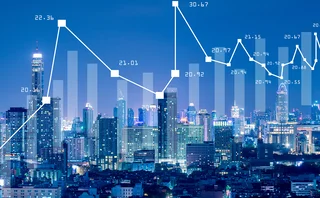
Isda and BMA propose 35% charge for restructuring risk
The International Swaps and Derivatives Association (Isda) and the Bond Market Association (BMA) submitted a comment letter today to the Basel Committee on Banking Supervision in which they argued that, for the sake of capital calculations, loans hedged with credit default swaps (CDS) that do not protect against restructuring have restructuring risk equal to 35% of their default risk.
"[We provided] an estimate of how much capital being exposed to restructuring risk and being hedged to other types of default risk should attract under their IRB framework," says Emmanuelle Sebton, head of risk management and co-head of Isda’s London office. "We have what we call the discount factor, which tells you what the charge for pure restructuring risk should be, and we set it equal to 35% of the full default risk. We provided [the Committee] with some data to justify that. There’s not much data around, but we looked at ratings agency reports, research reports from large credit derivatives dealers, and pooled data from those sources to come up with it."
Isda and the BMA also asked the Committee to reconsider applying Basel II’s maturity adjustment – which requires more capital for longer-dated exposures – to short-term exposures under the internal ratings based (IRB) approach.
"We haven’t really focused on the treatment of very short-term exposures before, but we’ve been drawn to it by the way paragraph 292 of CP3 was drafted,” Sebton says, referring to a provision that could apply the maturity adjustment to instruments like repos, short-term loans and other instruments. “The IRB maturity adjustment is not suitable for short-dated exposures and hence should not be applied; what should be done should centre on adjusting the probability of default for exposures with a maturity below one year," she says.
The associations also reiterated some arguments they have made in the past. They said that the 5% add-on for CDS referencing investment-grade underlyings is too high and recommend it be reduced to 3%. They argued that that the 80% risk offset for CDS used to hedge trading book exposures is arbitrary and risk insensitive.
They also repeated their objections to CP3’s handling of value-at-risk back-testing “exceptions” – that is, when a VaR model’s results diverges from actual results during a back-test. CP3 requires that banks scale up the results of their VaR models, based on the number of exceptions, by multipliers that run from 1x to 3x. The associations say the multipliers are punitive and could discourage the use of VaR models.
The associations also argued that, under Pillar 2, the Committee should strive to ensure firms that operate in more than one jurisdiction should not be subject to “duplicative review”. Rather, the associations advocate the designation of lead supervisors to oversee these firms on a global basis.
Only users who have a paid subscription or are part of a corporate subscription are able to print or copy content.
To access these options, along with all other subscription benefits, please contact info@risk.net or view our subscription options here: http://subscriptions.risk.net/subscribe
You are currently unable to print this content. Please contact info@risk.net to find out more.
You are currently unable to copy this content. Please contact info@risk.net to find out more.
Copyright Infopro Digital Limited. All rights reserved.
You may share this content using our article tools. Printing this content is for the sole use of the Authorised User (named subscriber), as outlined in our terms and conditions - https://www.infopro-insight.com/terms-conditions/insight-subscriptions/
If you would like to purchase additional rights please email info@risk.net
Copyright Infopro Digital Limited. All rights reserved.
You may share this content using our article tools. Copying this content is for the sole use of the Authorised User (named subscriber), as outlined in our terms and conditions - https://www.infopro-insight.com/terms-conditions/insight-subscriptions/
If you would like to purchase additional rights please email info@risk.net
More on Market risk
Market risk solutions 2023: market and vendor landscape
A Chartis Research report that examines the structural shifts in enterprise risk systems and the impact of regulations, as well as the available technology.
The new rules of market risk management
Amid 2020’s Covid-19-related market turmoil – with volatility and value-at-risk (VAR) measures soaring – some of the world’s largest investment banks took advantage of the extraordinary conditions to notch up record trading revenues. In a recent Risk.net…
ETF strategies to manage market volatility
Money managers and institutional investors are re-evaluating investment strategies in the face of rapidly shifting market conditions. Consequently, selective genres of exchange-traded funds (ETFs) are seeing robust growth in assets. Hong Kong Exchanges…
FRTB spurs data mining push at StanChart
Bank building “single golden source” of trade data in a bid to lower NMRF burden
Asian privacy laws obstruct FRTB data pooling efforts
Bank scepticism and regulatory hurdles likely to inhibit cross-border information sharing
Seizing the opportunity of transformational change
Sponsored Q&A: CompatibL, Murex and Numerix
Doubts grow over US FRTB implementation
Fragmented roll-out would price European banks “out of the market”
Basel group shake-up has banks hoping for FRTB changes
Barger and Durand replaced by BoE's Nesbitt; banks want fresh look at P&L test
Most read
- Top 10 operational risks for 2024
- Top 10 op risks: third parties stoke cyber risk
- Japanese megabanks shun internal models as FRTB bites







